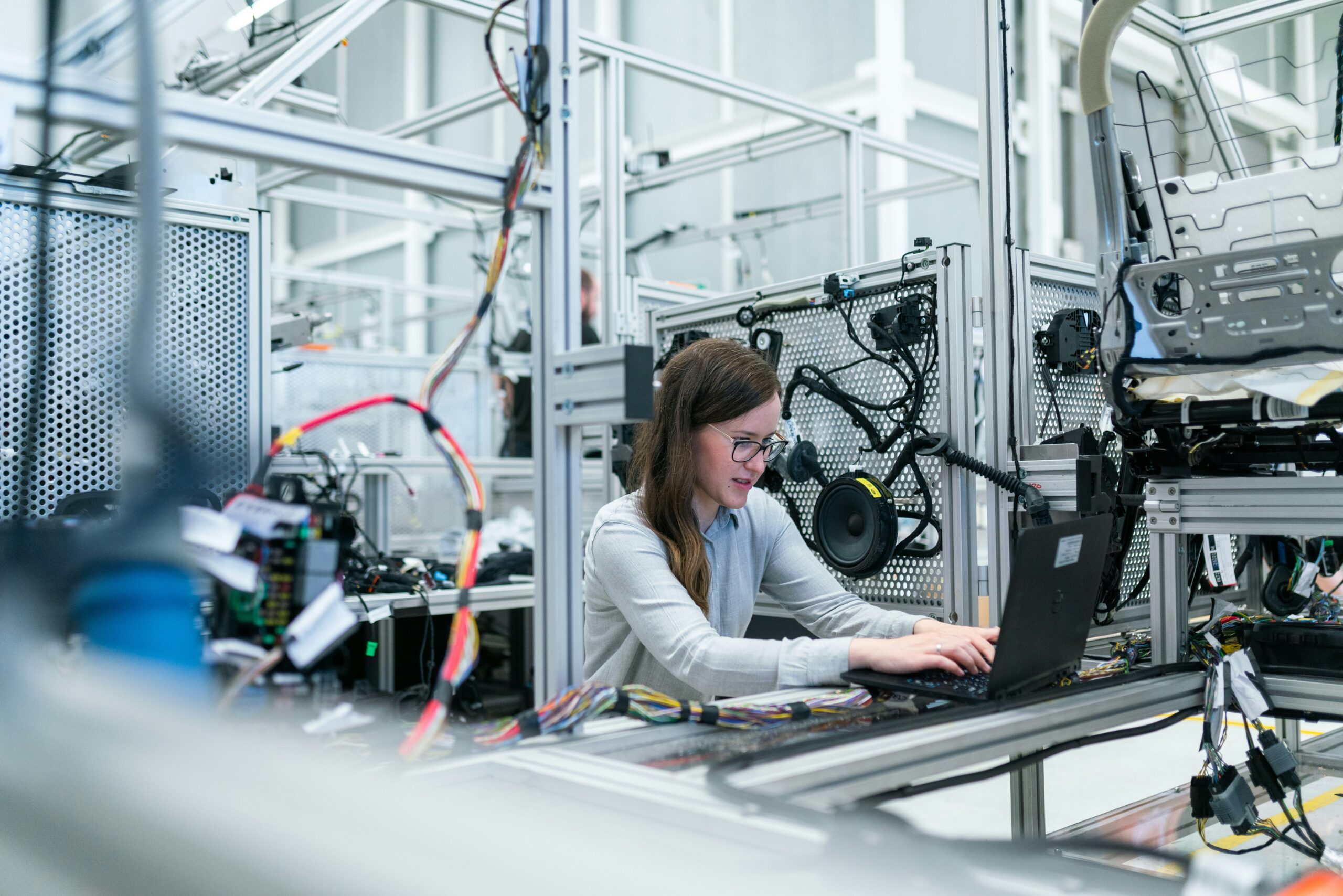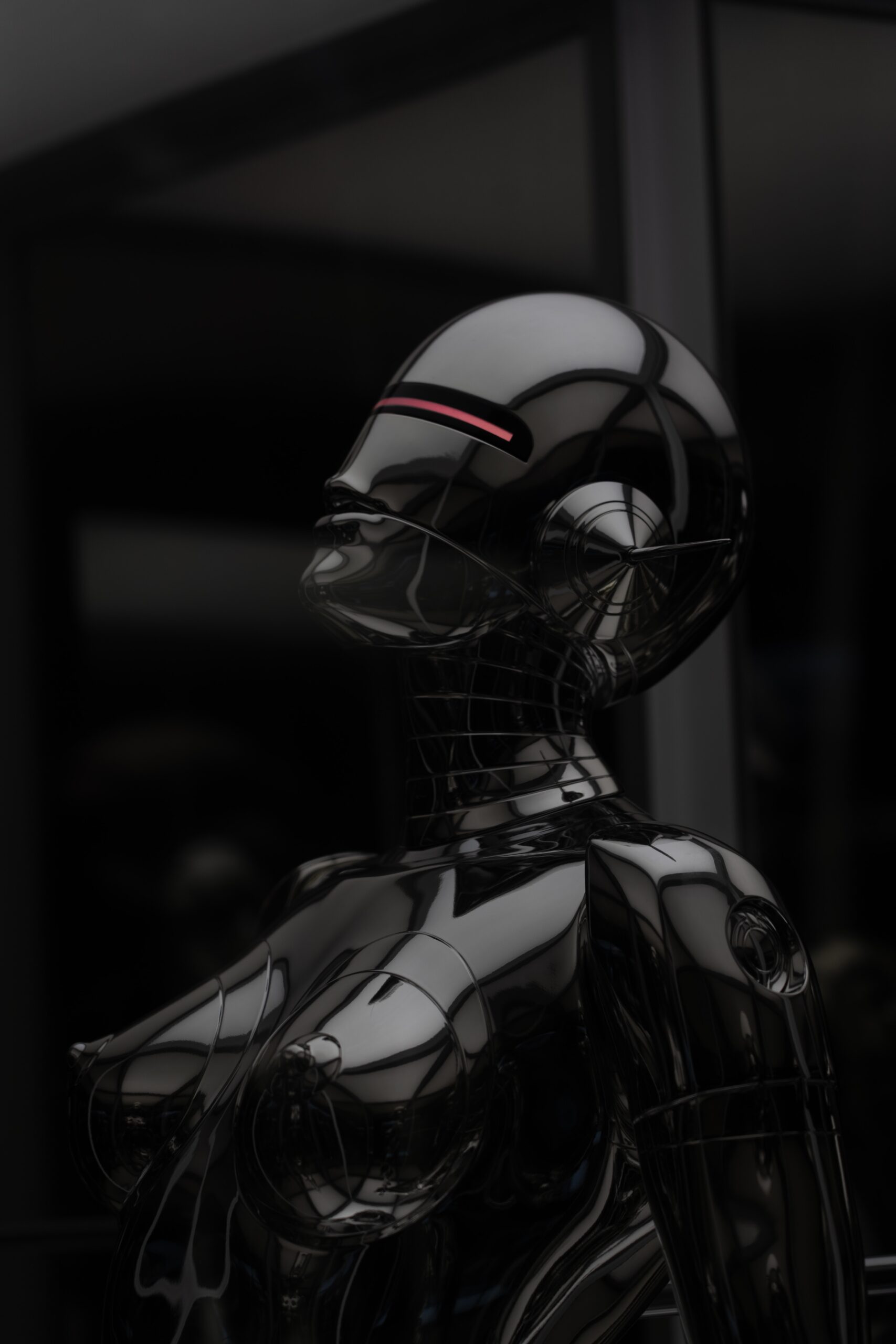Exploring the Latest Trends in Robotics Technology and Their Impact on Industries
December 9, 2024 | by osmondjones.tech

Introduction to Robotics Technology
Robotics technology encompasses the design, construction, operation, and use of robots, which are automated machines capable of performing tasks traditionally carried out by humans. This technology blends various fields, including engineering, computer science, and artificial intelligence, to create systems that can replicate human actions or execute complex processes autonomously. The foundational concepts of robotics trace back to antiquity, with early mechanical devices appearing in ancient civilizations. However, the term “robot” was first introduced in Karel Čapek’s 1920 play, R.U.R. (Rossum’s Universal Robots), which portrayed humanoid machines designed to serve humans.
Since its inception, robotics technology has undergone significant evolution, particularly during the 20th century. The industrial revolution marked a pivotal shift, as factories began incorporating robotic arms for tasks related to assembly lines. As computational technology advanced, the scope of robotics expanded, integrating more sophisticated sensors and control algorithms. In the 21st century, robotics technology has further progressed, influenced by developments in machine learning and artificial intelligence, enabling robots to learn from their environments, adapt to new situations, and interact more seamlessly with humans.
Today, the significance of robotics technology is increasingly evident across various sectors. From manufacturing and healthcare to agriculture and logistics, the integration of robots has revolutionized operational efficiency and productivity. Furthermore, the ongoing research and development in robotics technology continue to reshape our understanding of automation, creating smarter systems poised to tackle complex challenges. As we delve deeper into the latest trends in robotics technology, it is crucial to recognize its profound impact on modern industries and the potential it holds for both economic and social advancement.
Current Trends in Robotics Technology
Robotics technology is experiencing rapid advancements, largely driven by the integration of artificial intelligence (AI). This synergy enables robots to operate autonomously, making decisions based on real-time data analysis. AI-powered machines can learn from their environment, enhancing their performance and adaptability. This trend is particularly evident in manufacturing sectors, where robotics systems are being employed to improve efficiency and precision in production lines.
Another significant development in the robotics arena is the rise of collaborative robots, commonly known as cobots. Unlike traditional industrial robots that operate in isolation, cobots are designed to work alongside human workers in a shared workspace. This collaboration facilitates increased productivity and safety, as cobots can assist with repetitive tasks, allowing human employees to focus on more complex activities. Industries ranging from automotive to healthcare are increasingly adopting cobots to optimize their operations.
Moreover, automation is spreading across a wide array of sectors, including logistics, agriculture, and healthcare. In logistics, automated guided vehicles (AGVs) and drones are enhancing supply chain efficiency by streamlining inventory management and delivering goods swiftly. In agriculture, robotics is transforming farming practices through precision farming techniques that allow for optimized crop management and harvesting. The healthcare sector is also witnessing innovations, with service robots aiding in patient care and administrative tasks, thereby reducing the burden on medical staff.
Lastly, the growing demand for mobile and service robots is reshaping the robotics landscape. From delivery robots navigating urban environments to robotic assistants in homes, this trend is indicative of a broader shift towards automation in everyday life. As technology continues to evolve, the impact of these trends on various industries will be profound, paving the way for enhanced efficiency, safety, and innovation in robotics.
Impact of Robotics on the Fast Food Industry
The fast food industry has undergone significant transformation due to the integration of robotics technology. With the introduction of automated kiosks, businesses are enhancing customer interaction by allowing guests to place their orders without traditional human intervention. These kiosks not only speed up the process but also reduce the likelihood of errors, leading to a more streamlined dining experience. This shift represents a move towards a more efficient service model that prioritizes convenience and accessibility for customers.
In addition to kiosks, robotic chefs are beginning to play a prominent role in fast food operations. These machines are capable of cooking, assembling, and packaging food items, thereby minimizing the reliance on human staff for routine tasks. By automating these processes, restaurants can ensure consistency in food quality and reduce wait times for customers, ultimately enhancing the overall dining experience. Furthermore, with the incorporation of artificial intelligence, these robotic chefs adapt to preferences and optimize cooking times, contributing to an improved efficiency model within these establishments.
The emergence of delivery drones is another significant trend shaping the fast food industry. These drones expedite the delivery process, allowing businesses to serve a wider geographical area while reducing the time customers wait for their orders. Not only do drones provide a novel delivery experience, they also help in cutting operational costs associated with traditional delivery methods. The combination of these advanced technologies is reshaping the fast food landscape, helping establishments remain competitive while meeting evolving consumer expectations.
Overall, the incorporation of robotics in the fast food industry signals a pivotal shift towards greater efficiency, cost reduction, and enhanced customer satisfaction. As these technologies evolve, their role in optimizing and revolutionizing operations will become increasingly pronounced, marking a significant milestone in the industry’s ongoing development.
Transforming Education through Robotics
The integration of robotics in the educational sector has paved the way for innovative teaching methods and enhanced learning outcomes. Educational institutions are increasingly adopting interactive learning tools that leverage robotics technology to captivate students’ interest and improve engagement. These tools encompass a wide range of applications, from programmable robots that assist with coding exercises to interactive platforms that simulate real-world challenges relevant to students’ curriculum.
Furthermore, the incorporation of robotics in Science, Technology, Engineering, and Mathematics (STEM) programs is becoming vital in preparing students for future careers. By engaging students in hands-on experiences with robotic systems, educators foster critical thinking and problem-solving skills essential for navigating the complexities of a technology-driven world. Robotics competitions and clubs are gaining popularity in schools, offering students opportunities to collaborate, innovate, and apply theoretical knowledge to practical scenarios.
Additionally, educational robots designed for classroom use have taken center stage in teaching methodologies. These robots serve as teaching assistants, providing personalized feedback and facilitating collaborative learning among peers. Through the use of robotics, teachers can present abstract concepts in a tangible and interactive manner, making learning more accessible and enjoyable for students of all ages. Moreover, these tools cater to various learning styles, effectively addressing the diverse needs of learners.
As classrooms continue to evolve, the presence of robotics will undoubtedly play a pivotal role in reshaping educational experiences. By enhancing traditional teaching techniques and embracing modern technology, educational institutions can better prepare students for future challenges. The continual advancement of robotics technology, therefore, represents an exciting opportunity to foster a generation of learners equipped with the necessary skills and competencies for a tech-forward economy.
Enhancing Manufacturing with Robotic Technology
The integration of robotic technology into manufacturing processes has marked a significant evolution in the industry, transforming traditional methods and enabling new levels of efficiency and precision. Robotics in assembly lines has streamlined operations, allowing manufacturers to increase productivity while minimizing errors. Automated robots can perform repetitive tasks with remarkable speed and accuracy, which means that manufacturers can meet rising consumer demands without sacrificing quality.
Moreover, robotic systems are increasingly utilized for quality control, significantly enhancing inspection processes. By employing sophisticated sensors and computer vision technology, robots can detect defects in real-time, ensuring that only products meeting strict quality standards progress through the manufacturing pipeline. This capability not only decreases waste but also reinforces brand reliability, as consumers receive only the best quality products.
In addition to assembly and quality assurance, robotics plays a pivotal role in supply chain management. Automated guided vehicles (AGVs) and robotic systems can seamlessly transport materials throughout the manufacturing floor, reducing lead times and optimizing inventory levels. This automation leads to improved workflow efficiency and reduces labor costs, ultimately contributing to a healthier bottom line for firms.
Safety in manufacturing environments is another critical advantage of robotic technology. By delegating hazardous tasks to robots, companies can protect their workforce from potential injuries. Robots can handle dangerous materials and operate in high-risk areas, allowing human employees to focus on more complex decision-making roles that require cognitive skills rather than physical exertion.
As manufacturing continues to embrace robotic technology, organizations can expect ongoing advancements that will redefine productivity, precision, and safety standards across industries. By leveraging these innovations, manufacturers not only enhance their operational efficiency but also position themselves competitively in a rapidly evolving marketplace.
Challenges Faced by Robotics Technology
The robotics industry is at the forefront of technological innovation, yet it confronts a multitude of challenges that hinder its seamless integration across various sectors. One of the prominent issues is workforce displacement. As industries adopt robotics technology, there is an increasing concern that traditional jobs may be rendered obsolete. This transition necessitates a shift in the skill sets required for the workforce, compelling employees to adapt to a technology-driven environment. The need for reskilling and upskilling initiatives is paramount to mitigate the socioeconomic impacts of such displacement.
Another significant challenge is the high initial costs associated with implementing robotics technology in industrial processes. While automation can lead to long-term savings and increased efficiency, the upfront investment for purchasing robots and integrating them into existing operations poses a barrier, particularly for small to medium-sized enterprises (SMEs). These entities may lack the financial resources to invest in advanced robotics, thus potentially widening the gap between large corporations and smaller businesses.
Moreover, technical limitations present hurdles against the full integration of robotics technology. Current robots may struggle with tasks requiring flexibility and adaptability, limiting their effectiveness in unpredictable environments. This limitation reinforces the need for continuous research and development to create more sophisticated and capable robots capable of performing diverse tasks with precision.
Ethical considerations surrounding the deployment of robotics technology also merit attention. As robots become increasingly autonomous, the potential for misuse or unintended consequences arises, urging the industry to establish comprehensive regulations and ethical guidelines. Responsible deployment of robotics technology is essential to ensure its benefits do not come at the cost of societal welfare or environmental sustainability.
In conclusion, while robotics technology holds tremendous promise for enhancing industrial efficiency and productivity, addressing these challenges is crucial for its sustainable development and integration within the workforce.
Future Prospects of Robotics Across Industries
The future of robotics technology presents vast opportunities across numerous industries, driven by rapid advancements in artificial intelligence, machine learning, and sensor technology. These innovations are set to transform traditional operations, enhancing productivity and efficiency. As industries increasingly adopt robotic solutions, forecasts suggest a significant shift towards greater automation, leading to increased throughput while minimizing labor costs and human error.
In manufacturing, for example, robotics is expected to reach new heights of sophistication. The implementation of collaborative robots, or cobots, which work alongside human workers, promises to increase operational flexibility and reduce the risks associated with manual tasks. Furthermore, advancements in predictive maintenance and IoT integration can promote seamless production processes, enabling companies to adapt swiftly to market changes. This evolution in manufacturing robots will lead to smarter factories that can operate autonomously under specified conditions.
The service industry is also poised for a robotic revolution. From automated customer service agents to advanced delivery drones, businesses are exploring robotic applications to enhance customer interaction and optimize logistics. The hospitality sector, too, is likely to embrace robots for roles ranging from reception duties to cleaning services, setting a new standard for operational efficiency. In healthcare, the utilization of robotic surgery and patient care assistants is anticipated to grow, as these systems provide precision, personalization, and improved patient outcomes.
Moreover, as robotics technology continues to advance, sectors such as agriculture and construction will experience innovative applications. Autonomous farming equipment capable of performing complex tasks will support sustainable agricultural practices. Similarly, drones in construction can streamline site surveys and materials delivery. In summary, the prospects for robotics across various industries are substantial, paving the way for enhanced productivity, cost savings, and improved service delivery as automation becomes increasingly integrated into everyday business practices.
Case Studies of Robotics in Action
Robotics technology has made significant inroads across various industries, showcasing its effectiveness through numerous real-world implementations. One notable example can be found in the fast-food sector, where chains like McDonald’s have turned to automated systems for food preparation and customer service. By employing robotic fryers and kiosks that allow customers to place orders, these companies have witnessed increased efficiency and reduced wait times, which enhance overall customer satisfaction. This integration of robotics not only streamlines operations but also helps to mitigate labor shortages, showcasing the adaptability of robotics in the service industry.
In the realm of education, the implementation of robotics is transforming traditional learning structures. Various schools and universities are introducing robotic kits and programming languages to enhance STEM education. One exemplary program is the use of LEGO Mindstorms in classrooms, where students engage in building and programming their own robots. This hands-on experience fosters critical thinking, creativity, and problem-solving skills. Schools utilizing such robotics initiatives report higher student engagement and improved academic performance, indicating the positive impact robotics can have on educational outcomes.
Manufacturing, another critical sector, demonstrates a strong reliance on robotics technologies. For instance, Tesla’s Gigafactories are renowned for their use of automation in assembly lines. The implementation of robotic arms has allowed for precision in the manufacturing process, leading to reduced errors and increased productivity. Furthermore, the use of collaborative robots (cobots) alongside human workers enhances safety and improves workflow efficiency. Exceeding productivity targets and achieving reduced operational costs, these robotics implementations have fundamentally altered the landscape of manufacturing, setting new benchmarks for industry standards.
Through these case studies, it’s evident that robotics technology is not merely a futuristic concept; rather, it is actively reshaping industries, driving efficiency, and providing innovative solutions to contemporary challenges.
Conclusion and Final Thoughts
As we have explored in this blog post, the rapid advancements in robotics technology are significantly transforming various industries. From manufacturing to healthcare, the integration of robotics has streamlined processes, improved efficiency, and enhanced the overall quality of services provided. These innovations not only optimize operational workflows but also facilitate the development of new business models that were previously unimaginable.
The impact of robotics extends beyond mere automation; it encompasses emerging trends such as collaborative robots (cobots), artificial intelligence (AI), and machine learning. These technologies are increasingly being adopted to complement human capabilities, thus creating a synergy that boosts productivity and safety in the workplace. Furthermore, the use of robotics and automation has proven invaluable in addressing labor shortages across multiple sectors, enabling businesses to maintain high levels of performance.
However, it is crucial for stakeholders to acknowledge the challenges that come with these advancements. The shift towards increased automation can lead to concerns regarding job displacement and the need for reskilling current workforces. Therefore, it is imperative for companies and policy-makers to engage in dialogue that balances the benefits of robotic technology with the potential societal repercussions. Continuous learning and adaptation will be vital in navigating this evolving landscape.
In conclusion, staying informed about the latest trends in robotics technology is essential for those wishing to harness its potential. Embracing the opportunities while being mindful of the challenges will equip industries to thrive in an increasingly automated world. As we move forward, the synergy between humans and robotics could pave the way for innovative solutions, fostering growth and adaptation in the years to come.
RELATED POSTS
View all


